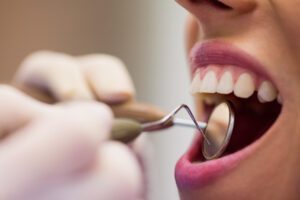
Are Braces or Invisalign Cheaper?
When considering orthodontic options, you might wonder whether braces or Invisalign is the more economical choice. Traditional braces usually come with a lower price tag, while Invisalign can quickly add up, especially for complex cases. However, the decision isn’t just about upfront costs; various factors play a role in determining the overall value. Understanding these nuances can help you make an informed choice that fits your needs and budget. Let’s explore these aspects further.
Cost Comparison of Traditional Braces and Invisalign
When considering orthodontic options, it’s essential to compare the costs of traditional braces and Invisalign, as both treatments have distinct pricing structures. Traditional braces usually range from $2,500 to $7,500, influenced by the type and complexity of your case. In contrast, Invisalign treatment typically costs between $3,000 and $9,000, often exceeding $10,000 in complex scenarios. The cost breakdown shows that Invisalign tends to be slightly more expensive upfront, reflecting its advanced customization using 3D imaging and clear aligners. Pricing trends also indicate that while traditional braces can be more economical, the choice often depends on personal preference for aesthetics and comfort. Evaluating these factors will help you make an informed decision about your orthodontic treatment.
Factors That Influence Treatment Costs
Several factors influence the cost of orthodontic treatment, making it essential to understand how each aspect can affect your overall expenses. The complexity of your case plays a significant role; severe misalignment or bite issues often require treatment customization and additional accessories, raising costs. The length of treatment also impacts pricing—longer durations mean more visits and adjustments. Material quality is another important factor; high-quality brackets or clear aligners typically come with a higher price tag due to advanced manufacturing processes. Geographic location can affect fees as well, with urban areas often being pricier. Finally, any additional services, like extractions or retainers, can add to your total treatment costs, making it imperative to evaluate all these elements when budgeting.
Insurance Coverage and Payment Options
Understanding insurance coverage and payment options is essential for managing the costs associated with braces and Invisalign. Many dental insurance plans cover orthodontic treatments, but the extent of coverage varies considerably. Traditional braces often receive more support, while Invisalign may face insurance limitations and coverage exclusions, particularly if classified as cosmetic. Typically, insurance covers about 50% of treatment costs, with lifetime maximums ranging from $750 to $3,000. It’s vital to verify your specific benefits with your provider, as waiting periods and exclusions can impact coverage. Additionally, flexible payment plans and health savings accounts can help you manage out-of-pocket expenses. Be proactive in understanding your plan to avoid any unexpected financial responsibilities.
Treatment Duration and Complexity
Choosing between braces and Invisalign involves more than just aesthetics and comfort; it also largely depends on treatment duration and the complexity of your dental needs. Conventional braces typically require about 24 months, while Invisalign averages around 18 months, although complex cases may extend to nearly 23 months. If you have severe malocclusions, braces often provide more effective treatment, ensuring consistent timelines. Invisalign suits mild to moderate cases but can lengthen treatment if significant adjustments are needed. Additionally, non-compliance with Invisalign can further delay progress, while braces minimize this risk since they’re fixed. Ultimately, understanding your case severity will help you choose the best option for efficient treatment and superior results.
Advantages and Perceived Value
While both braces and Invisalign offer effective orthodontic solutions, their advantages and perceived value can differ considerably based on individual preferences and treatment needs. Invisalign’s clear aligners provide significant psychological benefits, allowing you to feel more confident during treatment due to their discreet aesthetic appeal. This is especially valued by adults and professionals who prefer a less noticeable option. On the other hand, traditional braces may be more effective for complex cases, potentially offering greater long-term value. While braces can involve more discomfort initially, they require less maintenance over time. Ultimately, your choice will depend on balancing comfort, aesthetics, and treatment effectiveness to align with your personal values and lifestyle.
Regional Variations in Pricing
As you explore your options for orthodontic treatment, it is important to recognize that regional variations in pricing can greatly impact your overall costs for braces or Invisalign. Urban pricing typically reflects higher expenses due to elevated overhead, while rural pricing often offers more affordable options. In metropolitan areas, competition among providers can drive prices down, but you may still face increased consultation and follow-up fees. Conversely, rural regions might have less price variability, but baseline costs can be higher. Insurance coverage also varies by location, affecting your out-of-pocket expenses. As you consider your options, be sure to factor in these regional distinctions to find the most suitable treatment for your budget.
Frequently Asked Questions
Can I Switch From Braces to Invisalign During Treatment?
Yes, you can switch from braces to Invisalign during treatment, depending on your orthodontist’s assessment. Early stages offer more treatment flexibility, but complex cases may require careful consideration of available orthodontic options before making the change.
How Do I Know Which Option Is Best for Me?
To determine the best option, assess your treatment suitability based on alignment issues and consider lifestyle factors. Your comfort, aesthetics, and commitment to wearing aligners or maintaining braces will greatly influence your decision.
Are There Any Hidden Fees With Braces or Invisalign?
Yes, there can be additional costs with both braces and Invisalign. Treatment plans may include hidden fees for adjustments, consultations, or retainers not initially included, so always clarify potential expenses with your orthodontist beforehand.
Can I Eat Anything With Braces or Invisalign?
With braces, you face restrictions on hard, sticky, and chewy foods to avoid damage. In contrast, Invisalign offers flexibility, allowing you to eat anything by simply removing the aligners during meals for better convenience.
How Often Do I Need to Visit the Orthodontist?
You’ll need orthodontic visits every 6 to 10 weeks during treatment, depending on your progress and appliance type. Regular check-ups guarantee effective tooth movement and allow your orthodontist to address any issues promptly.
